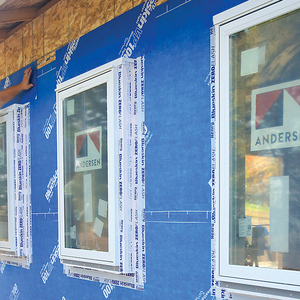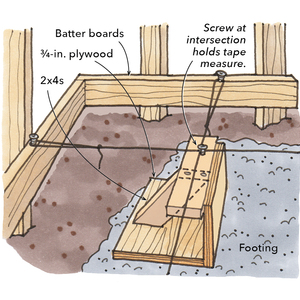I am working on an old church in Maine. I am repairing and replacing many of the old scarfed clapboards. I have tried many different techniques to scarf the boards and have found using a slick takes me about 8-10 minutes per board to manufacture them. Has anyone else come across this problem? and what was your efficient solution. Thanks Ed.
Discussion Forum
Discussion Forum
Up Next
Video Shorts
Featured Story

Look closely at these common locations for hazardous materials in older homes.
Highlights
"I have learned so much thanks to the searchable articles on the FHB website. I can confidently say that I expect to be a life-long subscriber." - M.K.
Fine Homebuilding Magazine
- Home Group
- Antique Trader
- Arts & Crafts Homes
- Bank Note Reporter
- Cabin Life
- Cuisine at Home
- Fine Gardening
- Fine Woodworking
- Green Building Advisor
- Garden Gate
- Horticulture
- Keep Craft Alive
- Log Home Living
- Military Trader/Vehicles
- Numismatic News
- Numismaster
- Old Cars Weekly
- Old House Journal
- Period Homes
- Popular Woodworking
- Script
- ShopNotes
- Sports Collectors Digest
- Threads
- Timber Home Living
- Traditional Building
- Woodsmith
- World Coin News
- Writer's Digest


















Replies
Is this novelty siding? Some places still carry it.
Excellence is its own reward!
if you are talking about the end joints being scarfed.. this was done with a hatchet.. the claps were not very long.. and they were usually applied over vertical sheathing in the colonial houses..
the claps were about 3' long and scarfed on each end to about 30 deg. in the face plane and about 60 deg in the front to back plane...
they were installed with a shingling hatchet and the scarf was cut with the same tool
you can see a lot of this on the restoration work done by Newport Restoration when Doris Duke started restoring Newport..
you can set up a radial arm saw .. or a miter saw to cut this double bevel as a reasonable aproximation of duplicating the hatchet cut
Mike Smith Rhode Island : Design / Build / Repair / Restore
look towards the boat building industry. Usually they use a power planer with a jig set to the 1:8 or so scarfing ratio. Ive seen a jig one can build on or around the boat building sites. THey were using a basic power planer not the more door oriented PC long planer.
It was a pretty simple jig. A ramp that mimiced the scarf ratio, the planer rode on the edges and viola the scarf was created.
Basically the wood was slid into the jig and a pass or two produced the scarfing joint.
You can also do this to mill in the coved shape. Vary blade depth, and angle of the runner clamped onto the tablesaw to get the shape you need. Make an eighth inch pass each time.
Excellence is its own reward!
1. I have made simple coved crown moulding with the table saw setup Pif shows, and it works quite well...once you get the approach angle and blade height worked out. It does take some hand cleanup though.
2. Can someone post a picture of a scarfed clapboard? IHNFI what you're talking about.
Do it right, or do it twice.